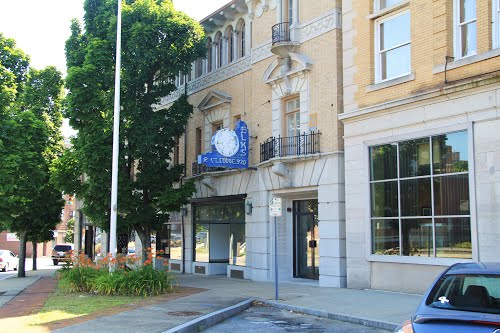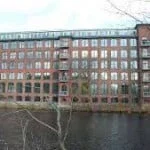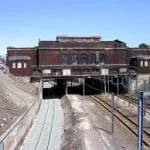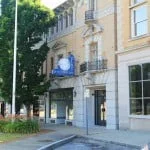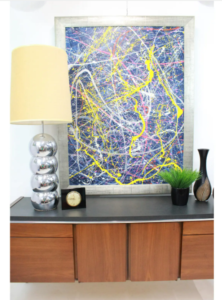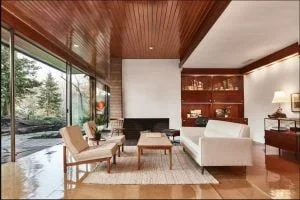This past summer I arrived early for a sale of vintage goods from a property owner in Pawtucket Rhode Island. I was pleasantly surprised by the “beauty in the rough” of this lively urban community situated just north of thriving Providence RI.
With plenty of time and curiosity I parked my ride and went strolling through the city of Pawtucket. The first impression was one of former greatness. Large homes, grand apartment buildings beautifully designed factories and textile mills all in different degrees of decline and reclamation. I remember when Lower Manhattan and Brooklyn looked like this. You could feel it; Pawtucket was on the upswing. It has developed a Bohemian edge. Rents are still affordable property prices are still obtainable by regular people standards. The local residents of multiple cultures are amiable. As a matter of fact after doing some research I learned that Pawtucket is becoming known as a center for arts and culture. In 2008 a documentary titled Pawtucket Rising also chronicled the influx of artists and cultural activities into previously blighted areas of the city.
I like it here.
My meandering takes me to my destination where I encounter a handsome 21,000 sqft Mission/Spanish Revival building designed by architect John F. O’Malley and constructed in 1926. It is three stories in height, with its facade faced in buff brick, laid in Flemish bond, and trimmed in cast stone. The building’s first floor was devoted to commercial tenants, with the upper floors devoted to a private members only club and their functions.
I enter the large foyer and I’m directed down a set of wide marble steps that empty into what was once a large, paneled, tiled and windowless bar room and dining room.
As I wait for my eyes to adjust from summer sunshine to basement bar room dark I notice odd shapes of things lined up along walls and stacked on shelves. In the dark, what first appears as narrow hallways are actually narrow paths that separate stacks of vintage furniture and accessories.
I immediately start to recognize the styling’s of George Nelson’s metal cubist tables, A Paul Laszlo credenza, Paul McCobb Headboard, Milo Baughman chrome and glass shelving a bench by Harvey Probber. Tables by Robs john Gibbings and Widdicomb. Along with Gerald Thurston, Lightolier and Kovacs, Russell Wright was also represented by some of his floor lamps. I hit the mother load a treasure trove. Tuts Tomb. As you might imagine I was like a kid in a candy store. It took two entire days to collect what I wanted and load it into my truck. I can honestly say that it was one of the best couple of days in my mid century modern life.

